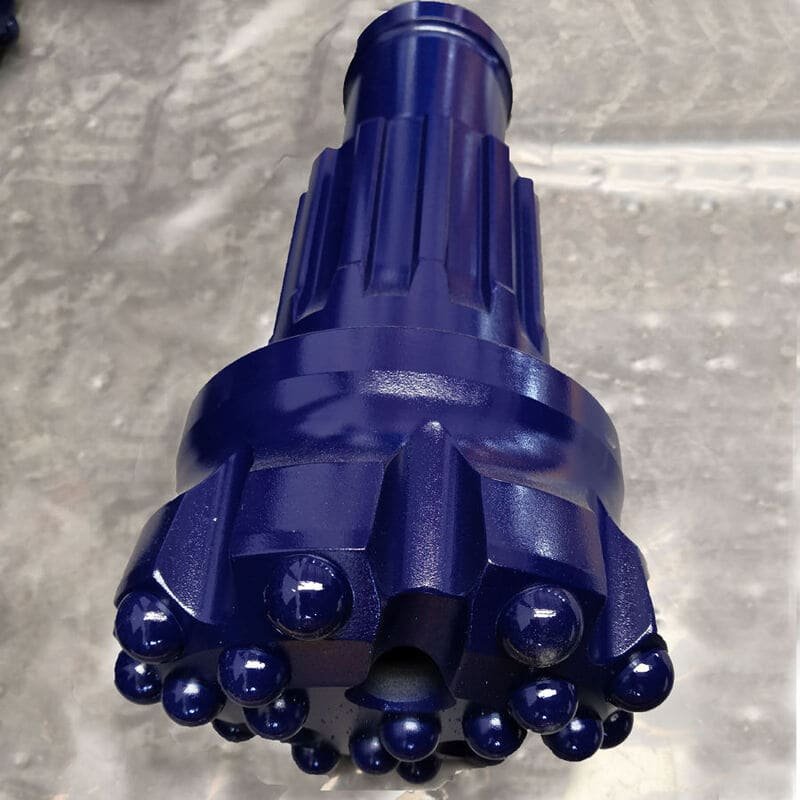Have you ever wondered what distinguishes a DTH drill bit in drilling? This tool doesn't just break the ground. It does so with precision and power.
The DTH (Down-The-Hole) drill bit uses rotation and hammering together. It drills deep and straight holes in hard rock. This tool provides higher penetration speeds than traditional rotary bits.
I remember my first meeting with a DTH drill bit. This happened on a mining site. The terrain was extremely harsh. Watching the drill bit operate was fascinating. It mixed raw power with skill. The drill bit spun and hammered through rock like it was soft butter. This intrigued me about its mechanics. This special hammering action really transforms difficult, deep drilling. Precision is crucial here. It feels like having a perfect tool in your toolbox. It never disappoints you.
DTH drill bits use percussive action for drilling.True
DTH drill bits combine rotation and hammering for efficient drilling.
Traditional rotary bits are faster than DTH bits.False
DTH bits offer higher penetration rates than rotary bits in hard rock.
How does the design of DTH drill bits enhance drilling efficiency?
Do you ever think about how machines drill rocky ground so well? The secret is in DTH drill bits' design!
DTH drill bits improve drilling efficiency. They work together with DTH hammers. These bits reach high penetration rates. The drills use energy-saving systems. This design is really effective in hard rock. It also works well in deep holes. It provides a trustworthy solution for difficult drilling tasks.
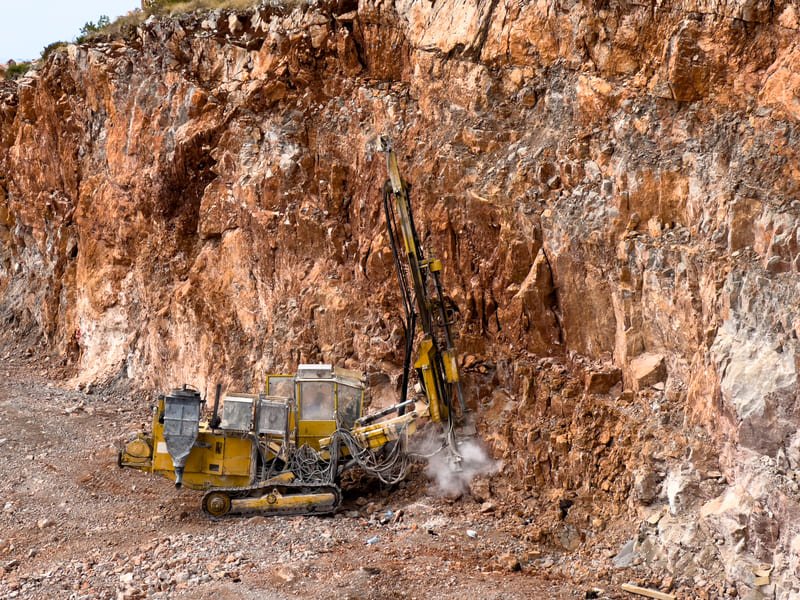
Integrated System with DTH Hammers
Imagine this: I stand on a construction site, amazed as these machines drill through solid rock effortlessly. The secret? It’s the flawless pairing of DTH drill bits with DTH hammers. Together, they create a strong drilling system1 that directs energy straight to the rock surface. It is almost like a perfectly synchronized dance. The result is minimal energy waste and very fast drilling speeds. Even the toughest rocks seem easy to break.
Composition and Material
One day, I inspected a drilling site and got to hold a DTH drill bit. Its weight surprised me. That weight shows its strong steel body and shiny tungsten carbide inserts. These materials are not just for looks; they help the bits survive harsh conditions. The carbide buttons are not just for appearance; they improve cutting ability and reduce wear over time.
| Component | Material | Purpose |
|---|---|---|
| Steel Body | High-Grade Steel | Provides structural integrity |
| Tungsten Carbide Buttons | Tungsten Carbide | Enhances cutting efficiency |
Percussive Mechanism
I watched the drill in action. It was clear this was not a usual rotary bit operation. Unlike traditional rotary bits, the percussive mechanism, with the hammer above the bit, hit the rock surface with power. This design sped up the drilling process, ensuring holes stayed straight and true while reducing deviation. Compressed air or water keeps everything moving smoothly.
Energy Efficiency and Cost Effectiveness
I remember working numbers with a client one afternoon. We were amazed at the energy-efficient design2 of DTH drill bits. This design lowered operational costs significantly as these bits use less air, meaning lower expenses. Their strong build makes them last longer, saving on replacement and maintenance costs.
Versatility Across Applications
In mining, construction or oil and gas exploration, I have seen DTH drill bits work easily across various industries due to their versatility in handling different rock hardness levels well. I remember a time in mineral exploration where reverse circulation hammers were essential; they kept sample quality intact, showcasing their true versatility.
For more insights into how DTH drill bits3 work across industries, exploring specific applications can offer deeper insights into their role in modern drilling tasks.
DTH drill bits use a rotary mechanism for drilling.False
DTH drill bits use a percussive mechanism, not rotary, for drilling.
Tungsten carbide enhances cutting efficiency in DTH bits.True
Tungsten carbide buttons optimize cutting efficiency and reduce wear.
What Are the Key Operational Differences Between DTH and Rotary Drill Bits?
Have you ever stood at a crossroads, looking at drill bits and wondering which to pick? I will share my knowledge about DTH and rotary drill bits. This may help you decide.
DTH (Down-the-Hole) drill bits use percussive action and rotation. They work very well for hard rock and deep drilling. Rotary drill bits use only rotation. They are best for softer ground and shallow depths.

Design and Construction
I remember the first time I held a DTH drill bit. Its heavy design impressed me right away. These bits possess great strength. Craftsmen use steel and tungsten carbide buttons to create them. This combination isn't just for appearance; it delivers energy straight to the rock face, which is necessary for hard rock work. In contrast, rotary bits have a simple structure focused on spinning and don't have the strong materials found in DTH bits.
| Feature | DTH Bits | Rotary Bits |
|---|---|---|
| Material | Steel with tungsten carbide | Steel or carbide |
| Complexity | High | Moderate |
Operating Mechanism
I’ve seen how DTH bits work exceptionally well with their percussion system. Imagine a hammer hitting the bit with force—that’s how DTH performs in difficult geological conditions. Rotary bits, on the other hand, rotate to grind through softer materials. It's similar to picking between a jackhammer and a power drill; both have specific uses.
Performance Characteristics
DTH drill bits achieve high penetration rates in tough environments. They are like marathon runners in the drilling world, maintaining efficiency even at greater depths. Rotary bits perform best when precision is more important than depth, especially in softer lands.
- Penetration Rates: Higher with DTH due to its hitting action.
- Depth Capability: DTH performs well in deep settings.
- Rock Suitability: Rotary is ideal for softer rocks.
Versatility and Applications
In my experience with industries such as mining and oil exploration, DTH bits are adaptable leaders that work easily with different rock hardnesses. Rotary bits excel in construction and geotechnical drilling where demands are easier.
Diverse Applications4 display how each bit type caters to specific industry needs, securing top performance.
| Industry | Preferred Bit Type |
|---|---|
| Mining | DTH |
| Construction | Rotary |
Efficiency and Cost-Effectiveness
One thing I notice is the efficiency of DTH systems—they send energy effectively while using less air, reducing operational expenses. Their long service life is an extra advantage for managing costs. Rotary systems might need frequent replacements in difficult conditions but can be more economical in softer areas.
- Energy Use: More efficient with DTH.
- Operational Costs: Lower with DTH in challenging conditions.
- Replacement Frequency: Higher for rotary in tough terrains.
Knowing these differences helps adjust drilling solutions for specific project needs by leveraging each bit's unique advantages for maximum efficiency and success. For more details on material compositions and particular applications, check detailed resources5.
DTH bits have higher penetration rates than rotary bits.True
DTH bits use percussive action, enhancing penetration in hard rock.
Rotary bits are more efficient than DTH in hard rock conditions.False
Rotary bits struggle in hard rock; DTH is more efficient due to percussion.
Why are DTH drill bits the best choice for deep drilling?
You know that excitement when you discover the ideal tool that functions perfectly? That's exactly how I feel about DTH drill bits for deep drilling.
DTH drill bits serve as the preferred choice for deep drilling. They combine striking and turning actions. This results in fast drilling speeds. The bits also keep holes perfectly straight. Their special design allows for effective energy transfer. This design reduces wear and tear. These bits are suitable for tough drilling situations.
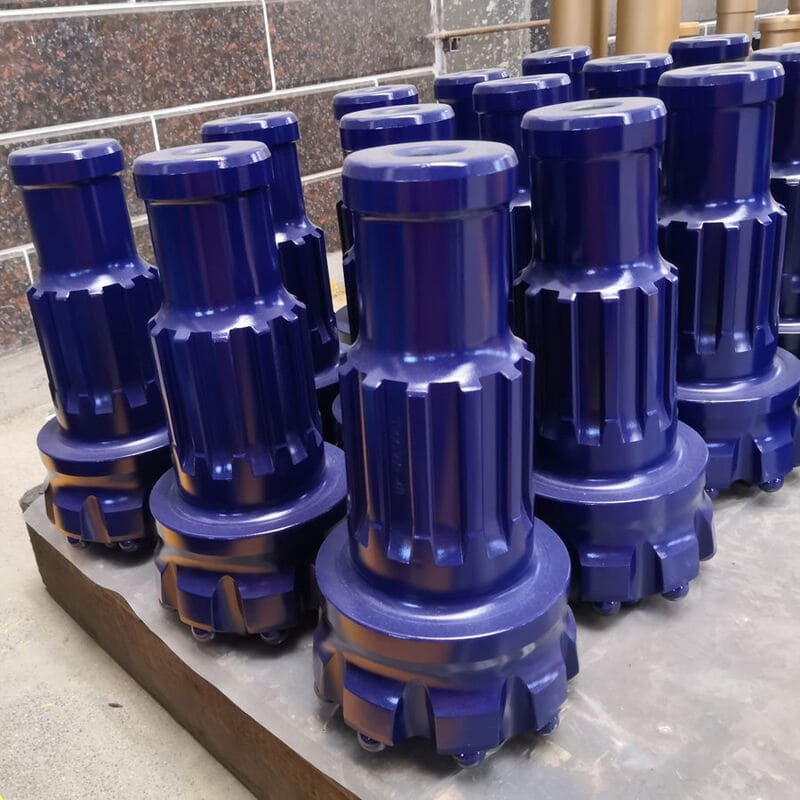
High Penetration Rates with DTH Drill Bits
When I first used DTH drill bits, I was surprised at how fast they cut through hard rock. It's like they have a special strength due to their powerful hammer hits. The hammer right above the bit strikes with strong force. This power makes them ideal for tough conditions.
DTH drill bits are renowned for achieving higher penetration rates in hard rock formations. This is primarily due to the percussive action6 they employ, which breaks rock more efficiently than purely rotary methods.
Maintaining Hole Integrity
Keeping a hole straight during deep drilling is challenging. Imagine drawing a straight line in a moving car. DTH drill bits send energy directly, so holes stay straight. I recall one project where this feature saved us a lot of time and really reduced our frustration.
One of the critical aspects of deep drilling is maintaining the hole's straightness and integrity. DTH drill bits excel in this regard due to their direct energy transfer from the hammer to the bit, minimizing hole deviation.
| Feature | Benefit |
|---|---|
| Percussive Action | Faster rock penetration |
| Direct Energy Transfer | Reduced hole deviation |
| Large Diameter Bits | Enhanced stability in deep drilling |
Versatility Across Industries
DTH drill bits are very versatile. I've seen their use in mining, construction, and oil & gas exploration. They are like the Swiss Army knife of drilling tools, handling different rock hardness levels with ease.
The versatility of DTH drill bits makes them suitable for various industries, including mining, construction, and oil & gas exploration. Their ability to handle different rock hardness levels allows operators to tackle diverse geological conditions with confidence7.
Energy Efficiency and Cost-Effectiveness
DTH systems use surprisingly little air compared to other methods. This saves on operational costs, which is always very good. The hammer and bit work together to use energy well, making them a cost-effective option.
For instance, specialized versions like reverse circulation (RC) hammers change the game in mineral exploration by providing precise samples and making the work much easier.
Long Lifespan and Reduced Wear
The durability of DTH drill bits is impressive; they last long especially in hard rock resulting in fewer replacements which means less downtime.
The design and materials used often result in an extended lifespan for these tools, enhancing productivity by reducing downtime during operations. If you want to extend your bit's life further, look at our guide on enhanced durability techniques8.
In every project I've worked on, these bits have shown their value repeatedly—honestly, I wouldn't drill deep without them.
DTH drill bits offer higher penetration rates than rotary methods.True
DTH drill bits use percussive action, which breaks rock efficiently.
DTH drill bits are unsuitable for maintaining hole integrity.False
Their direct energy transfer minimizes hole deviation, ensuring integrity.
Where Are DTH Drill Bits Most Commonly Used?
Curious about where those amazing DTH drill bits find their use?
DTH drill bits are often used in mining, construction and oil and gas fields. They drill through hard rock quickly and accurately. These tools also work very well for water well drilling. Their ability to adapt to different situations makes them popular. Geothermal drilling frequently uses them too.
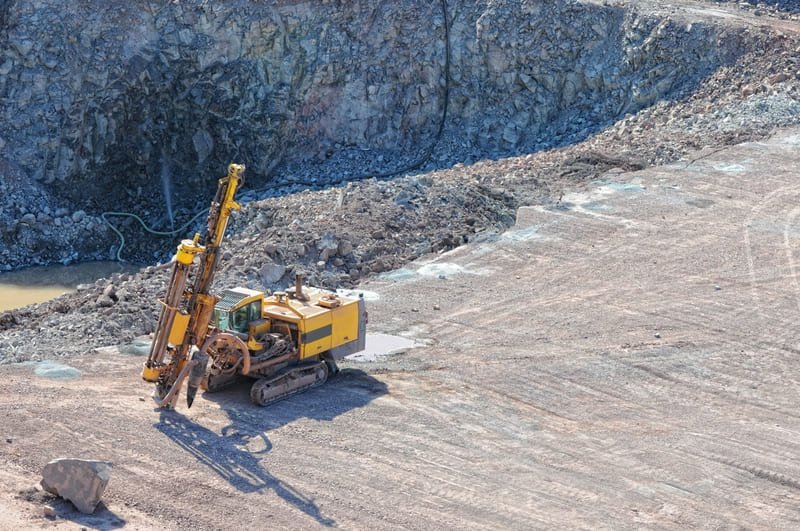
Mining Industry
In the mining sector, DTH (Down-The-Hole) drill bits transform challenging tasks into more manageable operations. Imagine being deep underground, surrounded by ancient rock. These bits tackle hard rock with ease. They offer fast drilling and stay straight, making them heroes in hard rock mining.
| Application | Benefit |
|---|---|
| Hard Rock Mining | High penetration rates |
| Open-Pit Operations | Straight hole drilling |
| Underground Drilling | Reduced air consumption |
Explore more about their role in extracting minerals9 efficiently.
Construction Industry
Picture working on a construction site where the foundation is key. The construction industry relies on DTH drill bits for foundational work in infrastructure projects like roads, bridges, and skyscrapers. Their ability to maintain straight holes is crucial for creating stable foundations. For blasting operations, they prepare sites like experts.
Learn more about their use in blasting operations10.
Oil and Gas Industry
The oil and gas field also benefits from DTH drill bits. They are vital for drilling wells needing precision through tricky geology. Their design allows them to handle complex geological conditions often encountered in these applications.
Discover their importance in well completion11 processes.
Water Well Drilling
In rural areas, water well drilling is crucial. DTH bits excel in this job due to their capability to efficiently bore through varying soil and rock types, providing swift access to water sources.
They are a preferred choice for rural water supply projects12.
Geothermal Drilling
In geothermal energy projects, DTH drill bits are impressive for their durability and performance under high-temperature conditions. They facilitate the creation of deep wells necessary for harnessing geothermal energy.
Explore how they contribute to sustainable energy solutions today.
DTH drill bits are mainly used in the healthcare industry.False
DTH drill bits are not used in healthcare; they're used in mining, construction, etc.
DTH drill bits ensure straight holes in construction projects.True
In construction, DTH drill bits are valued for maintaining straight holes for stability.
What Are the Cost Implications of Using DTH Drill Bits?
Understanding the costs of DTH drill bits might surprise some. These tools balance upfront costs with savings over time during drilling. Initial expenses may seem high, but they lead to long-term benefits. Drill bits that last longer offer real savings in prolonged use. This balance between cost and efficiency is crucial for effective drilling operations.
DTH drill bits influence costs with factors such as initial spending, efficiency, lifespan and maintenance. They require higher upfront investment. They really speed up drilling. This efficiency frequently results in lower project expenses. Their long lifespan can reduce maintenance needs. They often minimize maintenance.
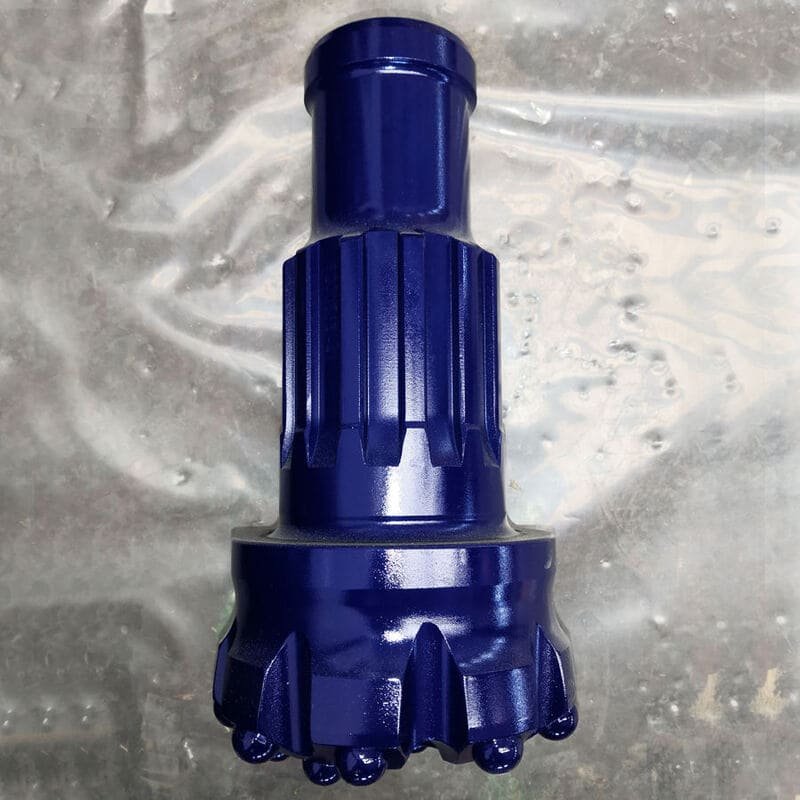
Initial Investment and Equipment Costs
When I first tried using drilling tools, I found the price of DTH drill bits surprising. The idea of paying more at first was scary. But then, I saw how these bits changed our work. They are definitely worth it.
DTH drill bits look expensive at first because of their complex design and materials like tungsten carbide. This high initial cost is challenging. Yet, I discovered these bits last longer, reducing the need for replacements.
Operational Efficiency and Speed
Once, we drilled through very hard rock. DTH bits worked quickly and efficiently. They saved us days, which unexpectedly reduced labor costs. It was a great surprise.
| Factor | Impact on Costs |
|---|---|
| Faster Drilling | Reduces labor costs |
| Less Downtime | Minimizes equipment idle time |
Lifespan and Durability
DTH bits have a long life. They can handle harsh conditions, so you replace them less often. I noticed how this strength meant buying fewer bits, helping our budget.
Maintenance and Operational Costs
Regular care is important, but DTH systems use less air and cause less wear on machines. This means less work stoppage and fewer problems.
The direct impact13 mechanism of DTH bits also contributes to less wear and tear on machinery.
Comparison with Other Drilling Methods
I compared DTH with top hammer drilling. Top hammer might seem cheaper at first glance, but DTH gives straighter and deeper holes. This makes it a better choice for me.
For more details, you could explore costs in diverse geological conditions14.
Impact of Project Scale and Duration
In big projects, DTH drilling benefits stand out even more. The combined savings in time and hardiness are really important for profits.
This knowledge has helped me match my projects with goals and budget limits.
If you wonder if DTH bits fit your needs, these insights might truly guide your choice.
DTH drill bits have a higher initial cost than top hammer bits.True
DTH bits require specialized design, leading to higher upfront costs.
DTH drill bits consume more air than other drilling methods.False
DTH systems typically require less air consumption, reducing costs.
Conclusion
DTH drill bits excel in deep drilling through hard rock, utilizing a unique percussive mechanism for high penetration rates and straight holes, making them ideal for various industries.
-
Discover how integrating DTH hammers with drill bits enhances drilling efficiency by maximizing energy transfer and penetration rates. ↩
-
Learn about how DTH drill bits' energy efficiency reduces operational costs and improves performance in challenging environments. ↩
-
Explore the diverse applications of DTH drill bits across various industries and understand their impact on modern drilling operations. ↩
-
Discover how different industries utilize DTH and rotary drill bits to optimize their drilling operations. ↩
-
Access comprehensive resources for an in-depth comparison of DTH and rotary drill bits, focusing on operational efficiencies. ↩
-
Learn how percussive action improves drilling efficiency by breaking rock effectively. ↩
-
Discover how DTH bits adapt to various geological conditions with ease. ↩
-
Explore techniques to extend the lifespan of DTH drill bits in tough conditions. ↩
-
Understand how DTH drill bits enhance efficiency in mineral extraction within the mining sector. ↩
-
Learn how DTH drill bits contribute to effective blasting in construction projects. ↩
-
Explore how DTH drill bits facilitate precise drilling in oil and gas well completion. ↩
-
Discover the advantages of using DTH drill bits in water well drilling projects. ↩
-
Discover how DTH drill bits can enhance operational efficiency by reducing wear and tear on machinery. ↩
-
Learn how DTH's performance advantages may justify its costs over top hammer drilling in various conditions. ↩

